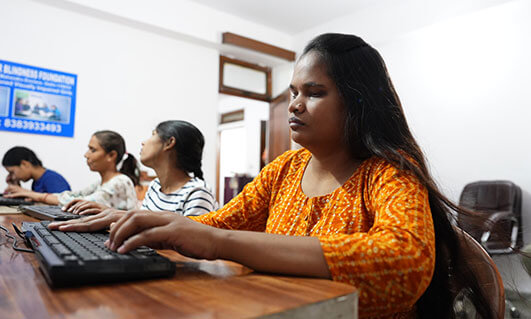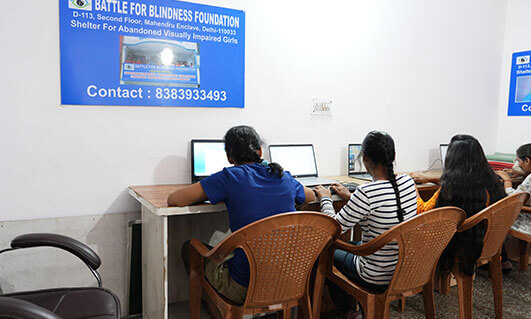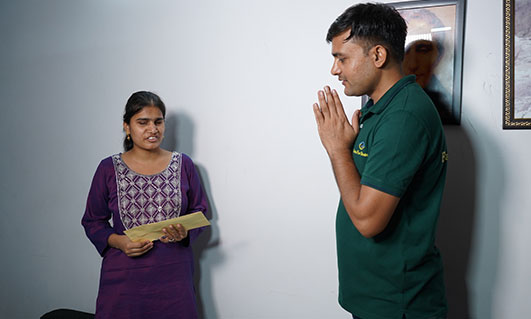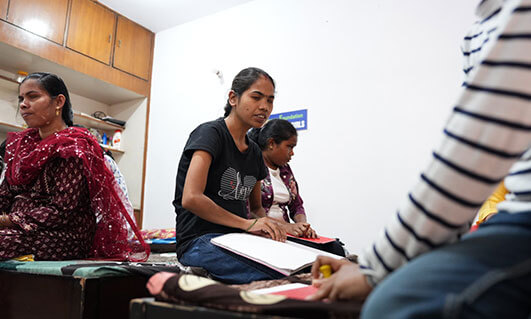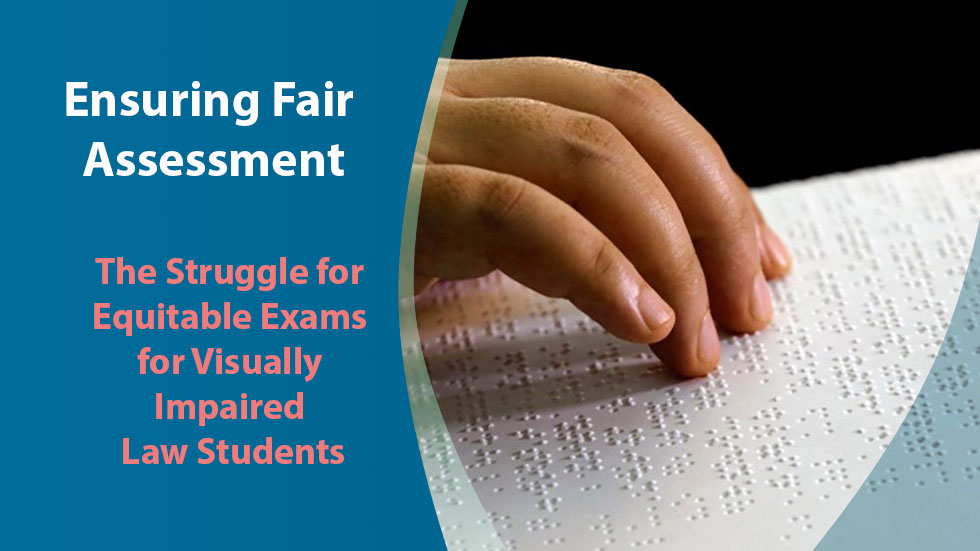
Navigating law school is challenging for any student, but visually impaired law students often face additional barriers, especially during exams and assessments. Fair evaluation is crucial in ensuring that all students, regardless of disability, have equal opportunities to succeed. Yet, traditional assessment methods can disadvantage visually impaired students, potentially impacting their academic and career trajectories. This article explores the barriers to fair evaluation for visually impaired law students and highlights strategies to foster inclusivity in legal education.
1. Barriers to Fair Evaluation
Inaccessible Exam Formats: Law exams often require reading lengthy case studies, analyzing complex texts, and responding to hypothetical scenarios under time constraints. Standard exam formats, typically in print, can be challenging for visually impaired students who rely on screen readers, magnifiers, or Braille. If these formats aren’t accessible, visually impaired students may be unable to complete exams effectively.
Time Constraints and Fatigue: Time-limited exams can be particularly taxing. Screen readers or magnifiers can slow down the reading and writing process, and extensive use may lead to fatigue. While some institutions offer extra time, it may not fully compensate for the added difficulty visually impaired students face in processing information quickly.
Inconsistent Accommodations: Though many law schools have policies on accommodations, the implementation can vary widely. Visually impaired students may receive inadequate or inconsistent support, such as malfunctioning assistive devices, lack of technical support, or poorly formatted exam materials. This variability can lead to stress and inequitable assessment experiences.
Difficulty in Demonstrating Knowledge: Traditional exams often emphasize written responses, but visually impaired students may have alternative strengths in verbal communication or other formats. Overreliance on written exams can limit their ability to showcase their understanding and critical thinking skills in ways that align with their strengths.
2. Strategies for Inclusive Evaluation
Implement Accessible Exam Formats: Law schools should prioritize creating exams in multiple accessible formats, such as digital text compatible with screen readers, Braille, and large print. Additionally, providing exams in digital formats with adjustable text sizes and background colors can greatly assist visually impaired students.
Offer Alternative Assessment Methods: For some students, oral exams or project-based assessments may allow for a more accurate representation of their abilities. Schools could allow visually impaired students to choose assessment formats that play to their strengths, such as verbal presentations or audio recordings, as alternatives to traditional written exams.
Provide Consistent Accommodations: Law schools should have standardized processes to ensure consistent accommodations. This includes providing reliable assistive technology, ensuring accessible exam locations, and offering adequate time extensions. Establishing clear guidelines and training for faculty and staff can also help ensure fair treatment for visually impaired students.
Emphasize Flexibility in Timing and Environment: Visually impaired students may benefit from more flexible exam schedules, including breaks to reduce fatigue. Creating a quiet and distraction-free testing environment can also improve concentration and reduce stress.
Involve Visually Impaired Students in Policy Development: Including visually impaired students in discussions about exam policies and accommodations can provide valuable insights into their unique needs. This involvement ensures that accommodations are relevant and effective, enhancing fairness in the evaluation process.
3. Supporting Fair Evaluation Beyond Exams
Fair evaluation extends beyond exams to the overall assessment of law students. Inclusive practices, such as accessible study materials, recorded lectures, and adaptive classroom technology, are essential in supporting visually impaired students throughout their studies. By fostering an inclusive learning environment, law schools can ensure that all students have equal opportunities to excel.
Conclusion
Fair evaluation is a fundamental aspect of educational equity, particularly in rigorous fields like law. For visually impaired law students, overcoming barriers in exams and assessments is crucial for their academic success and career readiness. By addressing the challenges of inaccessible formats, inconsistent accommodations, and rigid assessment methods, law schools can create an environment where all students are evaluated based on their true capabilities.
Inclusive assessment practices not only benefit visually impaired students but also foster a culture of diversity and innovation within legal education. By offering accessible exam formats, alternative assessment methods, and consistent accommodations, law schools can better support visually impaired students in showcasing their skills and knowledge. Ultimately, fair evaluation is about recognizing and valuing different abilities, empowering visually impaired law students to excel and contribute meaningfully to the legal profession.
It’s time for law schools to lead by example, setting standards for inclusivity that ensure every aspiring lawyer has the opportunity to succeed on an equal footing.
